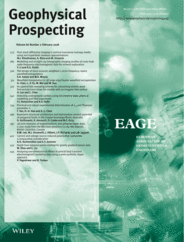
Full text loading...
In this paper, we study the possibilities of the use of microtremor records in the detection and delineation of near‐surface underground cavities. Three‐dimensional physical modelling data showed that the averaging amplitude spectra of a large number of microtremor records makes it possible to evaluate the frequencies and amplitudes of compressional standing waves generated by microtremor in the space between the ground surface and underground cavities. We illustrate how these parameters can be used to estimate the shape of the underground cavity horizontal projection. If the compressional wave velocity in the enclosing rock is known, it is possible to evaluate the depth to the cavity top using the frequencies of the standing waves. The results of the field experiment confirmed the possibility of underground cavities detection using microtremor data.

Article metrics loading...

Full text loading...
References


Data & Media loading...

